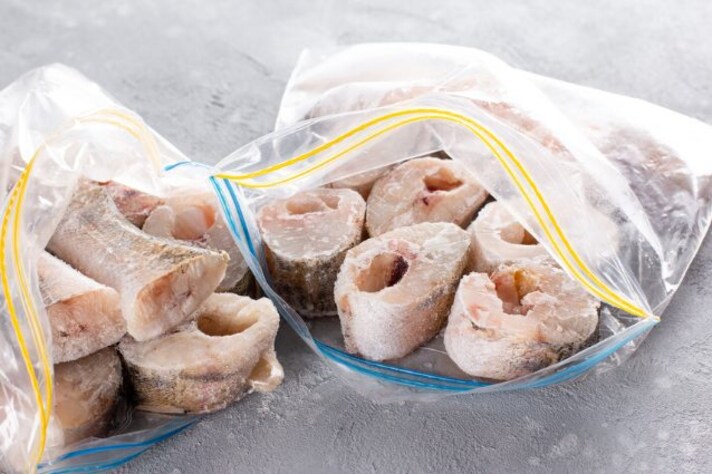How to Thaw Frozen Fish Quickly but Safely: Expert Tips for Defrosting
Thawing frozen fish properly is crucial for both food safety and maintaining its flavor and texture. From the slow and safe refrigerator method to quicker options like cold water or microwave thawing, each method has its pros and cons. Learn which techniques seafood experts recommend and which ones to avoid for the best results.
;Resize,width=742;)
When it comes to cooking frozen fish, defrosting it the right way is just as important as the recipe itself. Whether you’re preparing a quick weeknight dinner or a special seafood feast, knowing how to safely thaw your fish can mean the difference between a perfect dish and a food safety disaster. While there are plenty of ways to defrost frozen fish, the speed and safety of each method can vary widely. Seafood experts have weighed in on the best ways to thaw fish quickly while maintaining its freshness and flavor. So, let’s dive into the best—and worst—methods to help you get dinner on the table without a hitch.
The Best Method: Thawing Fish in the Refrigerator
When it comes to safety, slow and steady wins the race. The refrigerator method is widely regarded as the best approach to defrosting fish, particularly if you have a bit of time on your hands. By placing the fish in a shallow pan or on a plate in the fridge, you allow it to thaw gradually at a consistent, safe temperature (typically around 40°F). This method ensures the fish remains at the right temperature, minimizing the risk of bacteria growth.
Experts agree that while this method is a bit slower, it preserves the quality of the fish better than any other method. The defrosting process typically takes about 12 hours for small portions, and up to 24 hours for larger fillets or whole fish. For best results, plan ahead and allow your fish to thaw overnight in the fridge. This method guarantees that you won’t compromise on safety or flavor, making it ideal for most dishes.

A Quick Option: Thawing Fish in Cold Water
If you find yourself in a bit of a time crunch, the cold water method is a viable option that will thaw your fish much faster than the refrigerator. The key here is to use cold—not warm—water to prevent the fish from reaching unsafe temperatures. To do this, seal your fish in a leak-proof plastic bag and submerge it in a bowl of cold water. Be sure to change the water every 30 minutes to keep the temperature steady and to ensure the fish defrosts evenly.
This method is much quicker, taking about an hour or less depending on the size of the fish. However, it’s important to note that this method doesn’t allow the fish to thaw as gradually as the refrigerator method, so there’s a slight chance it could affect the texture. Still, seafood experts say it’s safe and effective when you need to defrost fish in a pinch.
Microwave Defrosting: Use with Caution
The microwave method is by far the fastest way to thaw fish, but it comes with some caveats. When using the microwave to defrost fish, it’s crucial to use the defrost setting, which operates at a lower power to prevent the fish from cooking unevenly. Thawing fish in the microwave can be risky because certain areas of the fish may begin to cook while other parts are still frozen. This can lead to a rubbery texture and a loss of flavor.
If you choose to go this route, experts recommend checking the fish frequently to avoid overcooking. Ideally, the microwave should only be used for smaller fish fillets or if you're truly pressed for time. Even though it’s the fastest option, it’s not the most recommended for maintaining the quality of the fish, especially if you care about preserving texture and flavor.

Never Thaw Fish on the Counter
One method that’s frequently suggested but should always be avoided is defrosting fish at room temperature, particularly on the counter. The countertop method seems convenient, but it can be a breeding ground for bacteria. As the fish thaws, the outer layers warm up, potentially entering the “danger zone” (between 40°F and 140°F) where bacteria multiply rapidly.
While it may seem tempting to speed up the process by leaving your fish out, this method is not only unsafe, but it can also lead to a compromised taste and texture. Seafood experts strongly advise against defrosting fish this way, as it increases the risk of foodborne illnesses and spoils the delicate flavor of the fish.
Frozen Fish in Cooking? No Thawing Needed!
If you’re really in a rush, don’t forget that you can cook fish from frozen in some situations. Yes, you read that right—no thawing required! This method is best for dishes where the fish can be cooked directly, like baked fish, broiled fillets, or even fish tacos.
Cooking from frozen won’t affect the final result as much as you might think, and it can be a huge time-saver. Just be prepared to adjust the cooking time to account for the frozen state. It might take a little longer, but the results can be just as good. This method also prevents any texture changes that could occur from thawing, ensuring the fish retains its fresh taste.
;Resize,width=767;)
;Resize,width=712;)
;Resize,width=712;)

